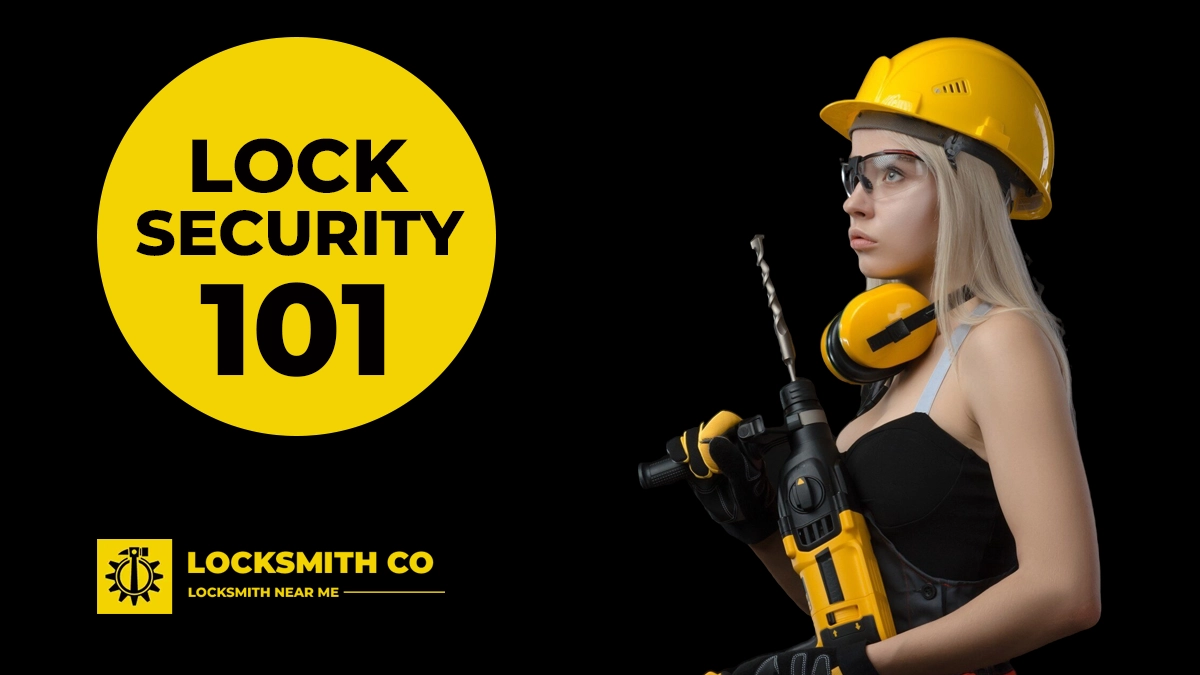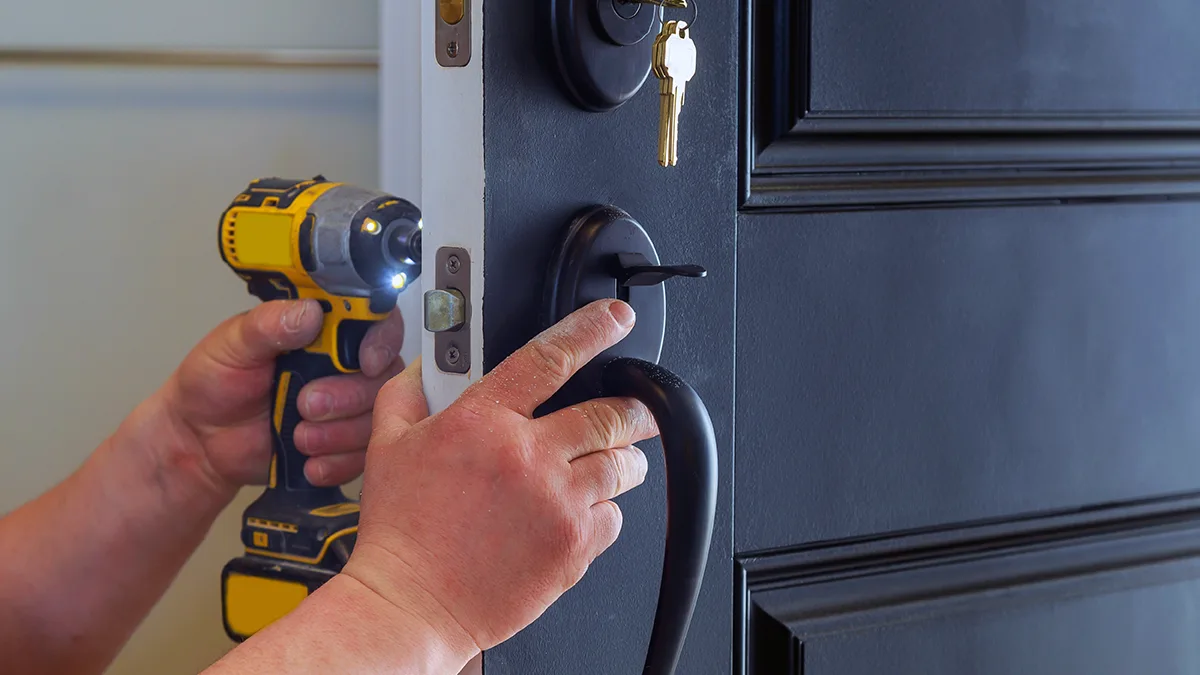Everything You Need to Know About uPVC Door Lock Repairs. In today's fast-paced world, ensuring the…
Lock Security 101: How to Recognise and Overcome the Threat of Lock Snapping
Lock security 101: How to recognise and overcome the threat of lock snapping. In the realm of home security, understanding the risks posed by lock snapping is crucial for safeguarding your property.
Lock Security 101
As a prevalent form of forced entry, lock snapping exploits the vulnerabilities of standard euro cylinder locks, leaving many homeowners at risk.
This article aims to arm you with essential knowledge and practical home security tips to combat this threat effectively.
We will guide you through identifying vulnerable locks and exploring the benefits of investing in anti-snap locks, ensuring that your home remains a fortress against potential intruders.
By adopting these lock safety measures, you can protect your home with confidence and trust in the reliability of your security solutions.
Understanding Lock Snapping
What is Lock Snapping?
Lock snapping is a method used by intruders to gain entry into a property by compromising the lock mechanism.
This technique specifically targets euro cylinder locks, which are commonly found in residential doors across the UK.
During a lock snapping attempt, a burglar applies force to the lock cylinder, breaking it in half.
This exposes the lock’s internal mechanism, allowing the intruder to manipulate the lock and gain entry without a key.
The process is alarmingly quick and requires minimal tools, making it a favoured method among burglars.
Despite its simplicity, many homeowners remain unaware of the vulnerability of their locks. Recognising and understanding the mechanics of lock snapping is the first step in safeguarding your property.
By educating yourself about this threat, you can take proactive measures to prevent it, ensuring your home remains secure against this prevalent form of forced entry.
Recognising Vulnerable Locks
Identifying vulnerable locks is a critical step in protecting your home from the threat of lock snapping.
Euro cylinder locks, particularly those that extend beyond the door handle, are most at risk.
These locks are commonly found in uPVC and composite doors. If the lock cylinder protrudes from the door by more than 3mm, it can be easily gripped and snapped by potential intruders.
To determine if your locks are vulnerable, check for any visible overhang. Additionally, older locks without British Standard Kitemark certification are more susceptible to snapping.
The Kitemark indicates that a lock has been tested for durability and resistance against common forced entry methods. If your locks lack this certification or appear worn, it may be time to consider an upgrade.
By recognising these signs, you can take the necessary steps to enhance your home’s security and significantly reduce the risk of forced entry.
The Impact of Lock Snapping
The impact of lock snapping extends beyond the immediate security breach, often leading to significant emotional and financial consequences for homeowners.
Once a lock is compromised, intruders can swiftly enter your home, potentially leading to theft or damage of valuable possessions.
The violation of personal space can also cause distress and anxiety, leaving homeowners feeling unsafe in their own environment.
Financially, the cost of repairing damage to doors and replacing stolen items can be substantial.
Additionally, insurance premiums may increase as a result of the claim. The repercussions can linger, affecting your sense of security and peace of mind.
Understanding the potential impact of lock snapping underscores the importance of taking preventive measures.
By addressing this vulnerability, you can not only protect your property and belongings but also safeguard your emotional wellbeing. Investing in robust security solutions is essential to prevent such disruptive incidents from occurring.
Effective Prevention Strategies
Anti-Snap Locks Explained
Anti-snap locks are specifically designed to counteract the vulnerabilities exposed by standard euro cylinder locks.
These locks incorporate features that prevent the lock cylinder from being snapped, a common technique used by burglars.
One of the key elements of an anti-snap lock is the presence of sacrificial cuts.
These are deliberate weak points in the lock cylinder that break away when force is applied, leaving the core mechanism intact and inaccessible.
Additionally, anti-snap locks often include reinforced components that withstand tampering, further enhancing their security.
These locks are usually accredited with the British Standard Kitemark, indicating their compliance with rigorous security testing.
Installing anti-snap locks is a proactive step towards forced entry prevention and represents a sound investment in home security.
By upgrading to these robust locks, homeowners can significantly reduce the risk of lock snapping and protect their property with confidence.
Home Security Tips for Safety
Enhancing home security involves more than just installing anti-snap locks. It requires a comprehensive approach to safeguarding your property.
Start by ensuring all entry points, including windows and back doors, have secure locks. Install exterior lighting with motion sensors to deter potential intruders.
Consider a monitored alarm system that provides immediate alerts in case of a breach. Reinforce doors with sturdy hinges and a deadbolt lock mechanism.
Additionally, maintaining visibility with trimmed hedges and clear sightlines around your property can prevent burglars from finding hiding spots.
For added security, consider installing a CCTV system to monitor activity around your home.
Regularly check and upgrade security measures to adapt to evolving threats.
Remember, a layered security strategy not only protects your home but also provides peace of mind.
By implementing these home security tips, you can create a safe and secure environment for you and your family.
Investing in Quality Locks
Investing in quality locks is a fundamental step in fortifying your home against break-ins. High-quality locks provide a robust defence, making it significantly harder for intruders to gain entry.
Look for locks that carry the British Standard Kitemark, as these have been rigorously tested for durability and resistance to various forced entry techniques, including lock snapping.
Multi-point locking systems offer enhanced security by securing the door at multiple points, reducing the risk of forced breach.
Additionally, consider smart locks that offer keyless entry and can be controlled remotely, providing flexibility and monitoring capabilities.
While the initial cost of quality locks may be higher, the long-term benefits in terms of security and peace of mind far outweigh the expense.
Upgrading your locks is a prudent investment that not only protects your valuables but also enhances the overall safety of your living environment.
By choosing reliable lock solutions, you ensure a higher level of protection for your property.
Securing Your Property
Protect Your Home from Forced Entry
Protecting your home from forced entry requires a strategic approach to security.
Begin by assessing the current vulnerabilities in your property, focusing on weak points such as old or poorly installed locks.
Reinforce entry doors with solid, durable materials and consider security film for windows to prevent easy breakage.
Install a video doorbell to monitor and record any activity at your front door. Additionally, secure sliding doors with a rod or a track lock to prevent them from being lifted or forced open.
Regularly review and update your security measures to stay ahead of potential threats.
Consider joining a neighbourhood watch programme to increase community awareness and response to suspicious activities.
By implementing these strategies, you not only deter potential intruders but also create a safer environment for your family.
Vigilance and proactive measures are key to ensuring your home remains a secure haven against forced entry attempts.
Lock Safety Measures
Implementing lock safety measures is crucial in strengthening your home’s defence against intruders.
Start by conducting a thorough assessment of all locks on doors and windows. Replace any outdated or damaged locks with high-quality, anti-snap locks.
Ensure that all exterior doors are equipped with deadbolts, providing an additional layer of security.
For added protection, consider installing a door chain or a spyhole, allowing you to safely identify visitors before granting access.
Regularly maintain and lubricate locks to ensure they function smoothly and effectively.
Educate family members on the importance of consistently locking doors and windows, even when at home.
Encourage vigilance in checking that all entry points are secure before leaving the property unattended.
By adopting these lock safety measures, you create a robust barrier against forced entry attempts, significantly enhancing the security of your home.
Proactive maintenance and awareness are essential components of a comprehensive home security strategy.
Choosing the Right Locksmith Services
Selecting the right locksmith services is vital for ensuring the security of your property. When choosing a locksmith, consider their qualifications and experience.
Look for professionals who are accredited by recognised industry bodies, such as the Master Locksmiths Association.
This accreditation ensures they adhere to high standards of practice.
It’s important to choose a locksmith who offers a comprehensive range of services, from lock installation and repair to emergency callouts.
A reliable locksmith should also provide advice on the latest security products tailored to your specific needs.
Additionally, check for customer reviews and testimonials to gauge the locksmith’s reputation and reliability.
Transparent pricing is another key factor; ensure there are no hidden charges.
Having a trustworthy locksmith on call can provide peace of mind, knowing expert help is readily available if needed.
By making an informed choice, you can ensure your locksmith services contribute effectively to the security and safety of your home.




Comments (0)